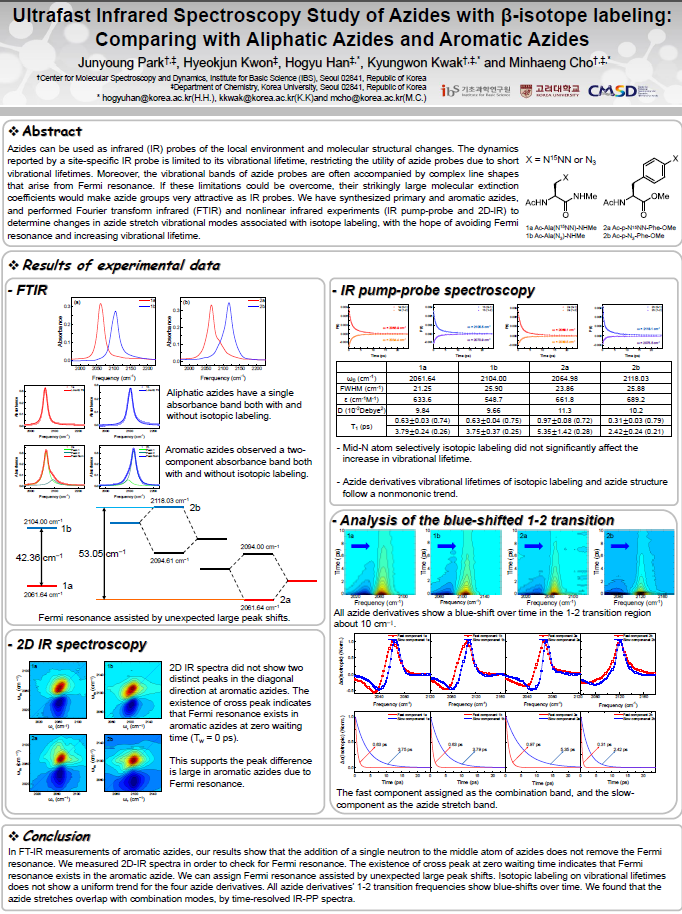mainmenu
Ultrafast Infrared Spectroscopy Study of Azides with β-isotope labeling: Comparing with Aliphatic Azides and Aromatic Azides
2019 123rd KCS

Azides can be used as infrared (IR) probes of the local environment and molecular structural changes. The dynamics reported by a site-specific IR probe is limited to its vibrational lifetime, restricting the utility of azide probes due to short vibrational lifetimes. Moreover, the vibrational bands of azide probes are often accompanied by complex line shapes that arise from Fermi resonance. If these limitations could be overcome, their strikingly large molecular extinction coefficients would make azide groups very attractive as IR probes. We have synthesized primary and aromatic azides, and performed Fourier transform infrared (FTIR) and nonlinear infrared experiments (IR pump-probe and 2D-IR) to determine changes in azide stretch vibrational modes associated with isotope labeling, with the hope of avoiding Fermi resonance and increasing vibrational lifetime.
Based on our FTIR results, 15N isotopic labeling did not effectively modulates azide stretching frequency from accidental Fermi resonance. 2D-IR spectra measured due to check the fermi resonance. There are cross-peak in aromatic azides. These cross-peaks mean that two vibration bands are involved in Fermi resonance. vibrational relaxation dynamics does not follow the same pattern when isotope labelling aliphatic and aromatic azide probes, respectively. All azide derivative 1-2 transition frequencies show a blue-shifted over time. We found that the azide stretches overlap with combination modes, by time-resolved IR-PP spectra. Our study lays groundwork for the research on new IR probes involving the isotope labeling of azide probes.


